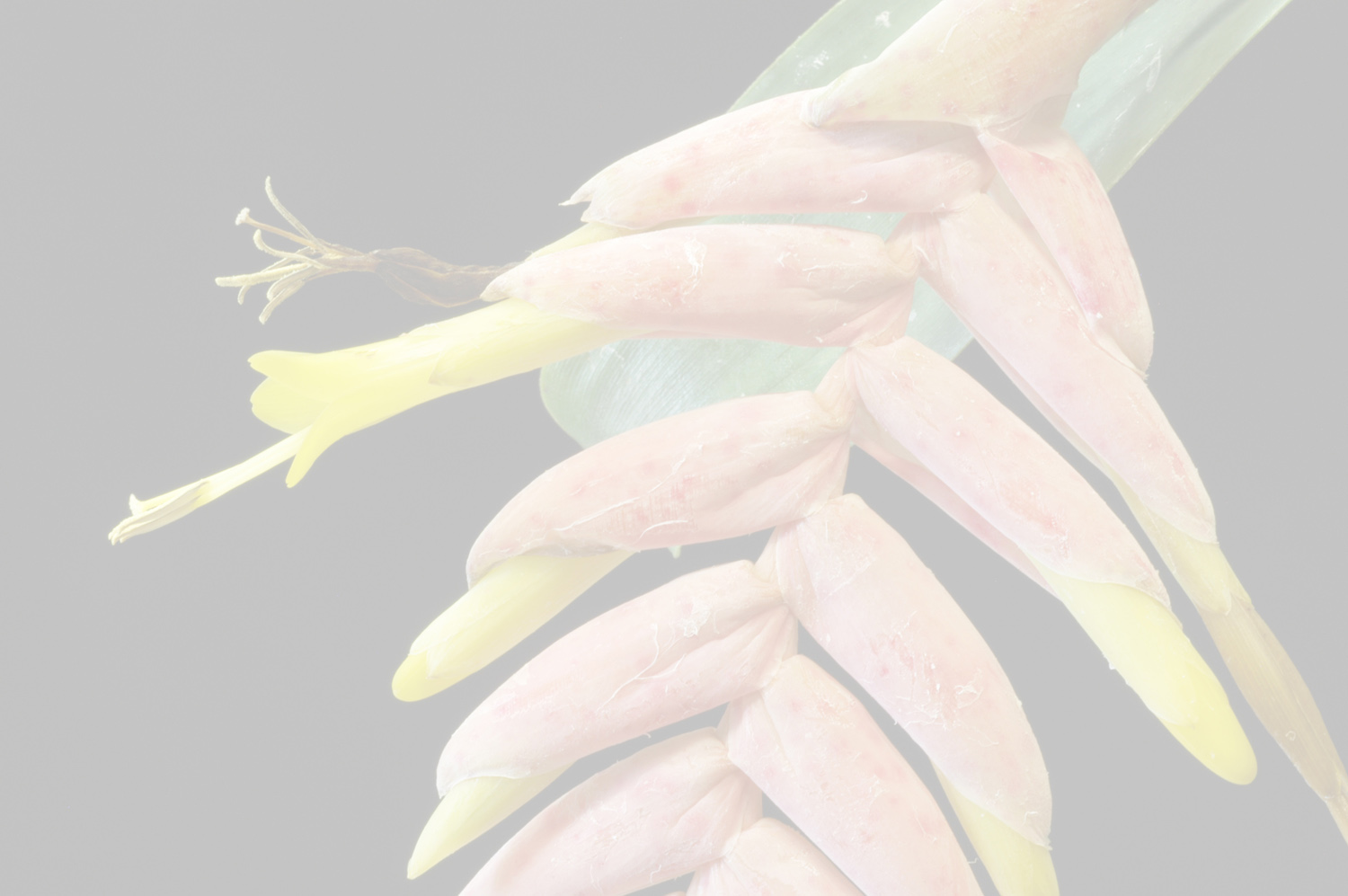


plant flowering ca 100 cm tall with the inflorescence extended. leaves ca 50, densely rosulate, suberect- arcuate, forming a broadly funnelform rosette; sheath oblongelliptic to broadly elliptic, 15–18 x 10–11 cm, very densely brown-lepidote on both sides, castaneous, coriaceous; blade very narrowly triangular, attenuate toward apex, apex acuminate-caudate and slightly recurved, 45–47 cm long, 3.5–4 cm wide at base, coriaceous, strongly canaliculate mainly toward base, grayish-green adaxially, cinereous abaxially, very densely white-lepidote on both sides, but only abaxially the layer of scales obscuring leaves color. inflorescence: peduncle stout, ca 30 cm long, ca 1.3 cm in diameter, strongly curved in an angle of 90° in reference to leaf-rosette, distinctly shorter than the leaves, green, glabrous; peduncle bracts foliaceous to subfoliaceous, distinctly exceeding the internodes; fertile part laxly particulate, once-branched, ca 48 cm long, 30 cm in diameter, spreading in an angle of 90° in reference to leaf-rosette; primary bracts triangular, long acuminate, ca 40 x 27 mm, clasping the base of the branches, green, many times shorter than the sterile base of the branches; branches ca 4, 35–48 cm long, nearly unilateral-secund and straight in a angle of 90° in reference to leaf-rosette to slightly decurved toward apex, subdensely ca 12-flowered at anthesis, peduncle 20–25 cm long, ca 0.8 cm in diameter, terete to slightly complanate, dark green, glabrous, bearing 5 to 6 (on the lateral branches) to 8 (on the terminal branch) sterile bracts, subtriangular, acute, ca 30 x 23 mm; slightly shorter than the internodes, green to dark purple, inconspicuously lepidote, clasping the peduncle, the basal ones obtusely carinate, rachis stout, flexuous, ca 7 mm in diameter, dark green, glabrous, slightly angulose; floral bracts suborbicular, ca 30 x 30 mm, narrowly obtuse, green or dark purplish near the apex and margins, glabrescent, distincly nerved near the margins, not completely enfolding the base of the flowers, slightly gibbous, about equaling 1/2 of sepals length at anthesis (equaling the sepals before anthesis), secund with the flowers, thick and fleshy with exception of the margins, ecarinate. flowers stout, distichous, anthesis nocturnal, spreading and inbricate before anthesis, suberect-secund at anthesis, odorless at least in cultivation, ca 60 mm long, pedicels very stout, obconic, ca 12 mm long, ca 14 mm in diamater at apex, green, glabrous; sepals broadly oblong-elliptic, apex obtuse to emarginate, 27–30 x 20 mm, succulent and coriaceous mainly toward base, margins membranaceous, inconspicuously and sparsely white-lepidote, free, ecarinate, green except for the the dark purple margins; petals obovate, apex narrowly emarginate, ca 45 x 20 mm, free, greenish-white toward apex, rigid toward base, spreading -recurved toward apex at anthesis, bearing at base 2 subsymmetrical, narrowly obovate, acuminate to bidentate, ca 13 x 4 mm appendages. stamens included, disposed in two rows with three of them on each lateral side of the corolla at anthesis; anther linear, ca 10 mm long, base and apex obtuse, fixed near the base. pistil: stigma tubolaciniate, ca 2 mm in diameter, green, margins shortly and irregularly crenulate, subspreading; ovules apiculate to shortly caudate.Edited from (21-10-2014): Vidalia, Revista da. (protologue) .